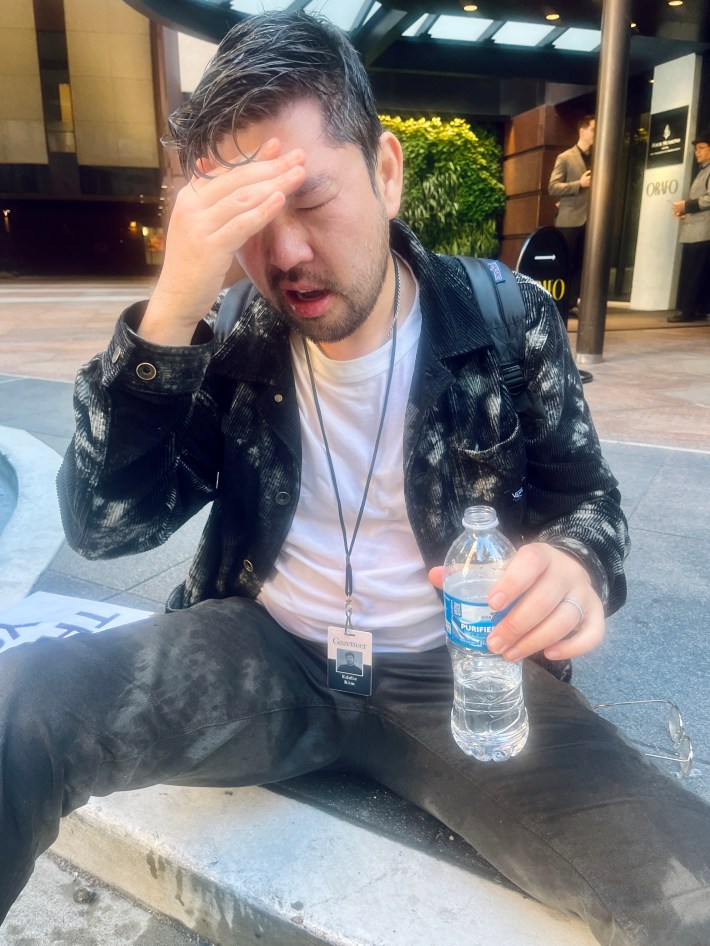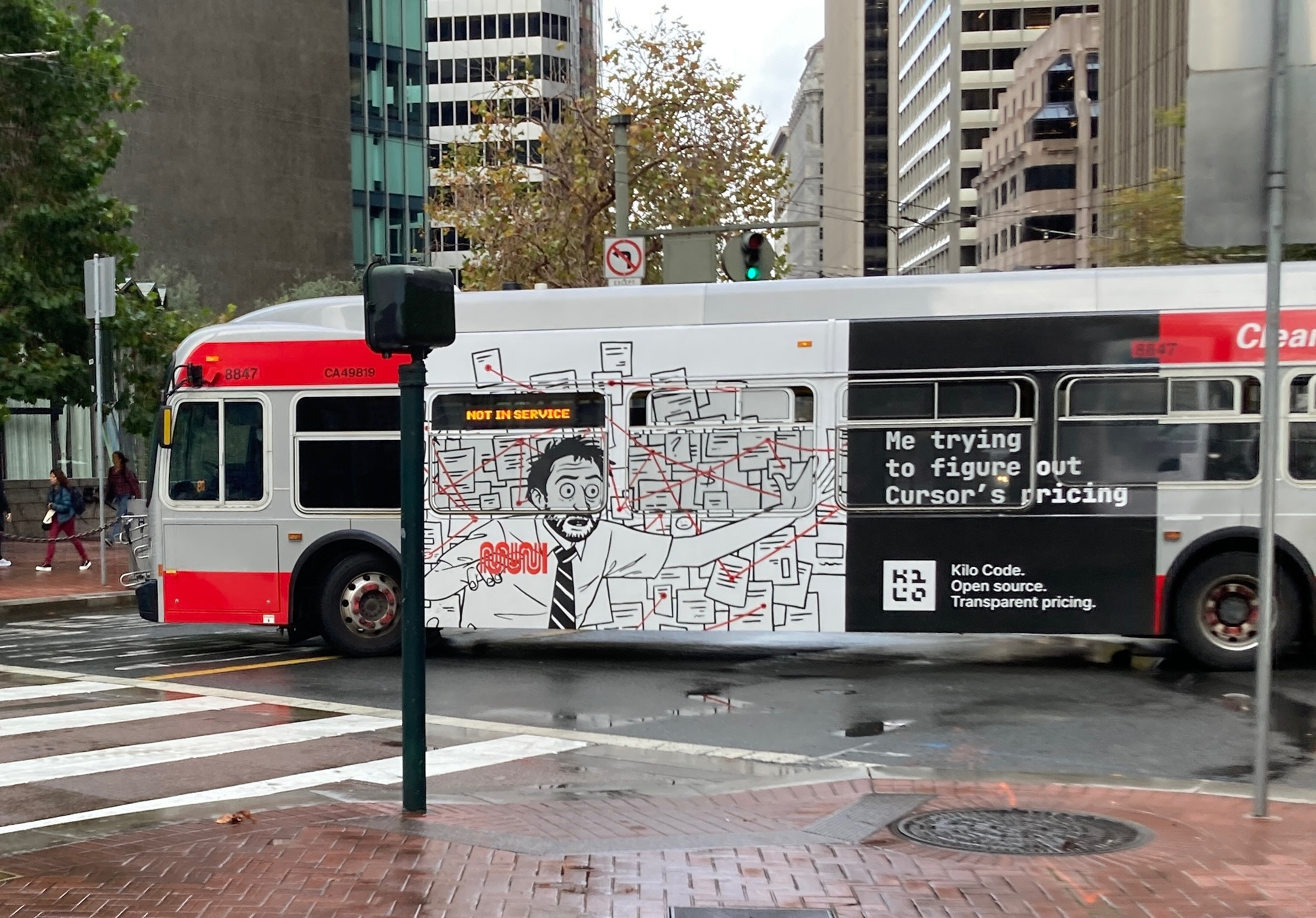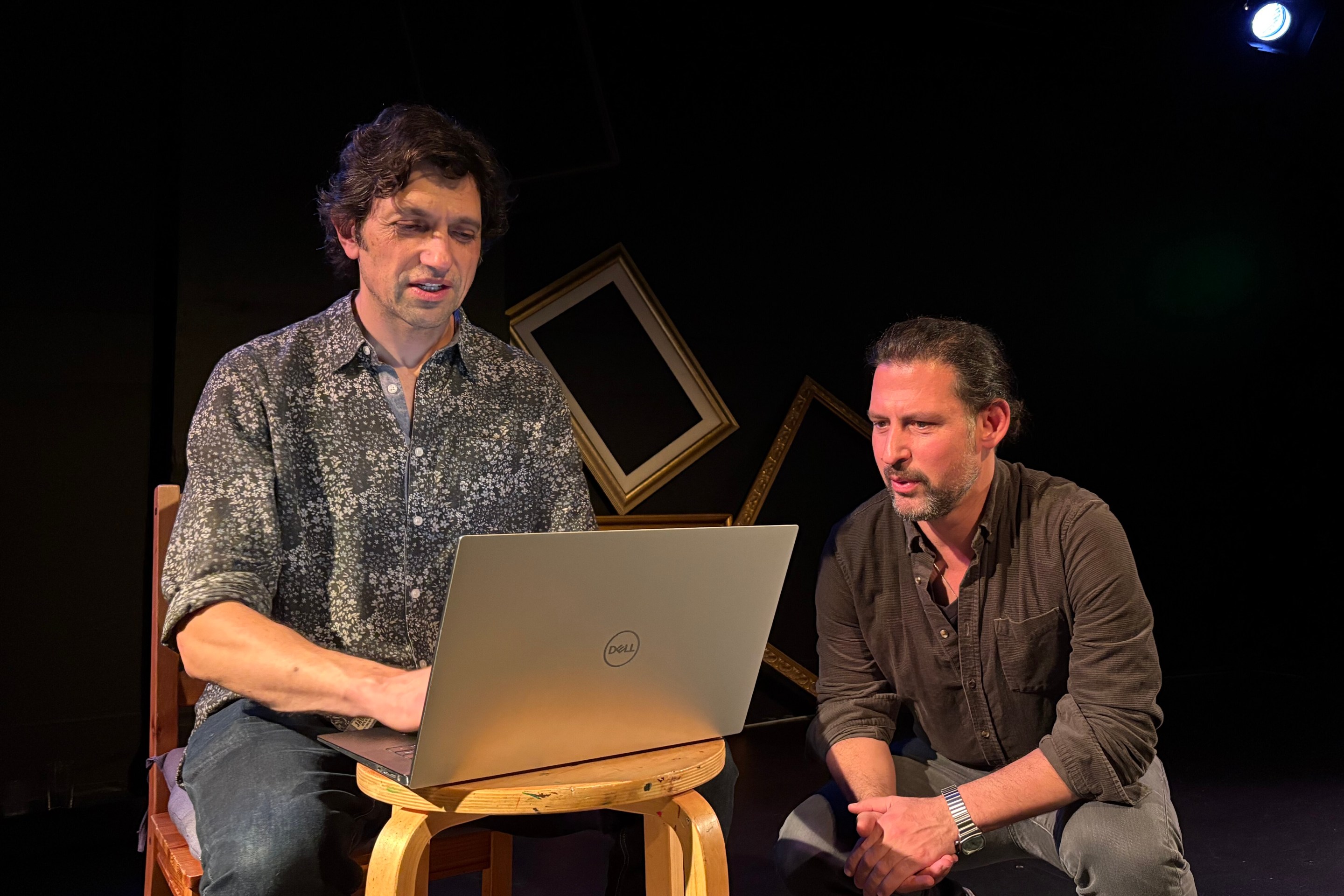At 9:30 a.m., I rushed to the San Francisco Immigration Court at 100 Montgomery St. after receiving tips that a person had been detained and was being transported off site.
By the time I got there, a melee was already unfolding among law enforcement agents, protesters, drivers, and passersby. Protesters had crowded around the main entrance of the court to block the transfer and confront federal agents; the masked and gaiter-clad agents then diverted the operation to the court’s garage entry around the corner on Sutter Street in an attempt to put the detainee in a waiting car.
With agents hitting bikes with batons, cars honking, a bus stuck in the road, and pedestrians filming and shouting, tensions were through the roof. Despite verbally identifying myself as a member of a press, a baton-wielding Customs and Border Patrol officer shoved me as I stood in the street.
Seconds later, an officer with ICE’s Enforcement and Removal Operations team grabbed me by the throat, pushing me onto the sidewalk. I was by far not the only person pushed, grabbed, or knocked down.
This was a different approach than what I had witnessed in June at ICE headquarters at 630 Sansome St. While federal officers were verbally aggressive and hands-on with protesters who attempted to block vehicles from leaving the site, law enforcement eventually retreated in a defensive formation without engaging further with protesters.
On Wednesday, federal agents escalated their approach. The language and behavior was more aggressive and, in many cases, preemptive. Several protesters were thrown to the ground. Some people were pepper-sprayed without provocation.
One of those people was me.
The assault unfolded as ICE vehicles forced their way past a black SUV and a Lyft driver who had, whether intentionally or otherwise, blocked the path from Sutter St. onto Sansome. Protesters around me worked to stymie the transport, but were ultimately unsuccessful; many were pushed forcibly by officers, including one man who pulled out his pepper spray as a threat and knocked me into a parked car.
As the vans sped north, however, it seemed like the action was slowing. A variety of officers from ICE and various DHS groups walked north in a scattered formation, with protesters and passersby following them. Several people on the sidewalk began yelling “shame!” and a barrage of insults at the heavily armed agents; other protesters attempted to talk reasonably to federal officers.
Some officers kept protesters at a literal arm’s length, but there was little apparent conflict until a lone ICE agent grabbed a protester's bike and attempted to yank it from them, despite the protester doing nothing other than walking alongside the agent.
Noticing the unprovoked struggle for the bike, I walked up with my camera up and my press identification visible. In a literal second, the agent pulled out his pepper gel, sprayed the protester next to me, and then shot a stream straight into my eyes.
The searing pain came as quickly as the attack itself. I fell to the ground near Sansome and Pine streets, more surprised than seriously hurt. Pepper gel is a concentrated form of pepper spray, and I felt the thick liquid smearing on my face as I attempted to wipe away as much of it as possible.
Several nearby protesters rushed to my aid, instructing me to tilt my head back as they flushed my eyes with water. I wasn’t able to see properly for 20 minutes; the two of us soaked ourselves and the sidewalk in our quest for relief.
The violence unfolded outside the Four Seasons hotel, just north of Sansome and Pine streets. Through hazy, sore eyes, I noticed other protesters continuing north, energized and upset about the assault on two people. A US citizen was allegedly detained near ICE HQ, at 630 Sansome St., shortly after I was incapacitated, according to multiple witnesses who asked to remain anonymous for their safety.
This would mark the second time in two weeks that a US citizen in San Francisco was detained by ICE. Such detentions are a gray area for the agency — it has competing directives that simultaneously prevent agents from detaining US citizens, but also allows them to arrest anyone for a felony during an immigrant-grabbing operation.
But what happened to me, the cyclist protester, and others is a sign that individual federal agents are now willing to proactively employ brute force against people who are not attacking them or even entering their personal space.
I was not able to get any identifying info or badge numbers from any federal agent on the ground. The man who sprayed me walked away, unconcerned about the outcome, off to continue his job removing people from the streets of our city.








